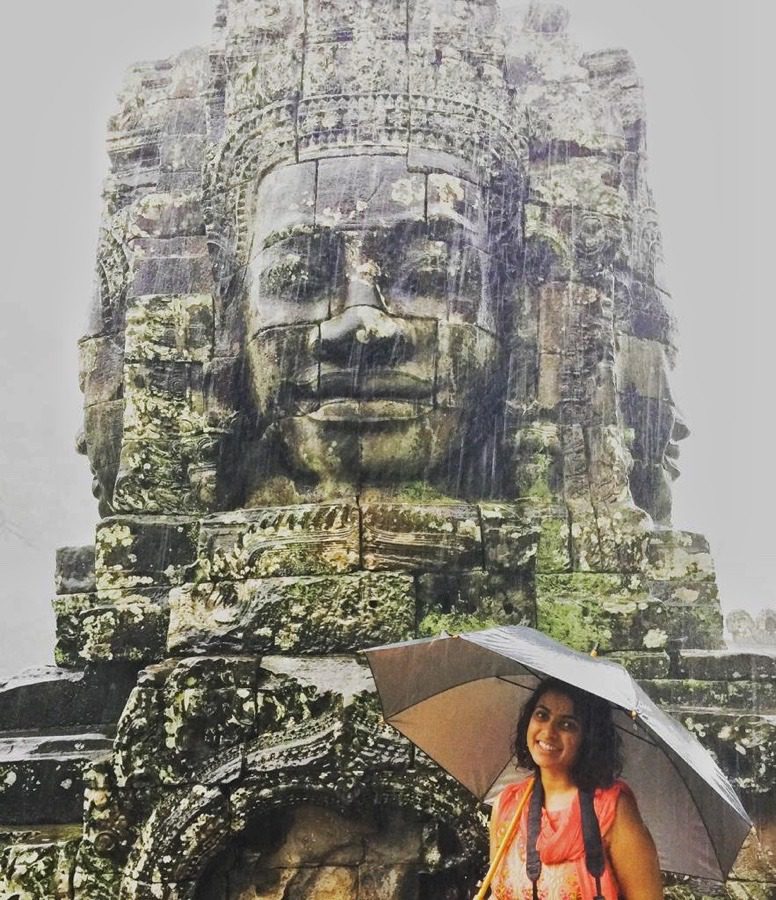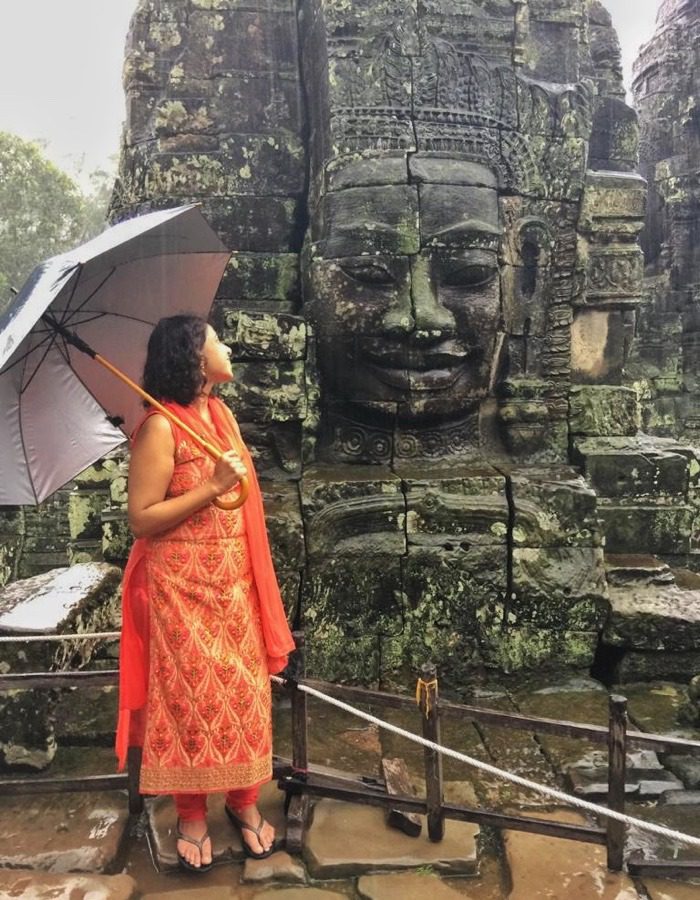Beyond Angkor Wat: Bayon Temple Facts You Need to Know (2024)
Discover the allure of Cambodia’s Bayon Temple facts. Uncover the mysteries behind this ancient marvel, from its unique architecture to its historical significance. Dive into a journey through time as we reveal intriguing details about Bayon Temple, taking you beyond Angkor Wat. Explore the secrets etched in stone and unravel the wonders of this captivating historical site.
The Bayon temple stands out as my absolute favourite among all the temples in Angkor Wat. Its breathtaking sculptures and the temple’s overall grandeur left me in awe. During my trip to Siem Reap with my mother, visiting the Bayon temple was a non-negotiable part of our itinerary. Standing before those massive structures, capturing the moment with photographs, was truly a beautiful experience. Undoubtedly, Bayon Temple holds a well-deserved place as one of the most photographed temples in Cambodia.
Page Contents
PIN for later reference – Bayon Temple Facts
This article may contain affiliate links, meaning if you decide to purchase via my links, I may earn a commission at no additional cost to you. For complete information, please see our affiliate disclaimer here.
About Bayon Temple
The Bayon Temple, situated within the ancient Angkor Wat complex in Siem Reap, Cambodia, holds a rich history. Originally constructed as a spiritual abode for the Hindu God Vishnu, it later transformed into a Buddhist temple.
Dating back to the late 12th or early 13th century, Bayon Temple is renowned for its unique feature – 54 towers adorned with distinctive smiling stone faces, aptly named face towers. This Khmer temple takes centre stage in Angkor Thom.
An intriguing fact about the Bayon Temple is the presence of 216 faces intricately carved into the stones. Four faces adorn each column, making these columns a genuinely distinctive and memorable sight. Witnessing this architectural marvel is undeniably one of the most remarkable experiences in my travels.
Ranked among the prominent trio of temples within Angkor Wat, the Bayon Temple welcomes visitors from 5:00 AM to 5:30 PM. Notably, the expansive Angkor Temple complex has operational hours from 7:30 AM to 5:30 PM. For an optimal experience, plan your visit during the early morning or late afternoon to witness the breathtaking sunrise and sunset, adding an extra layer of magic to your exploration of this historical site.
Entry Ticket
Access to the Bayon Temple is seamlessly integrated into the overall pass purchased for Angkor Wat. The one-day pass is priced at USD 37, the three-day pass at USD 62, and the seven-day pass at USD 72. These passes can be conveniently procured at the official ticket centre in Siem Reap.
Situated 4 kilometres from Siem Reap, the ticket office operates daily, welcoming visitors from 4:30 AM to 5:30 PM. Ensure you obtain your pass from this designated centre to facilitate your exploration of the Bayon Temple and the broader Angkor Temple complex.
Bayon Temple Facts
The interesting facts of the Bayon temple are:
- Ancient Legacy: The Bayon Temple boasts a remarkable age, a testament to time for over 820 years. Its enduring presence reflects the historical richness of the Angkor Wat complex.
- Architectural Marvel of Angkor Thom: Constructed by Maharaja Jayavarman VII, Angkor Thom served as the capital city. This architectural masterpiece adds depth to the Bayon Temple’s significance, being part of a larger urban complex with a rich cultural and political history.
- Faces of Compassion: The iconic faces adorning the Bayon Temple are representations of Bodhisattva Avalokiteshvara. This manifestation of the self-born eternal Buddha Amitabha embodies the virtue of compassion, infusing the temple with spiritual significance.
- Bas-Reliefs: Chronicles in Stone: Within the temple, two bas-reliefs narrate legendary and historical events. These intricate carvings depict mythological stories and events from the Khmer Empire, offering visitors a visual journey through the region’s culture.
- Architectural Complexity: Comprising three levels, the Bayon Temple showcases architectural complexity. Each level unfolds a different facet of the temple’s design, contributing to its visual grandeur and structural significance.
- Khmer Empire Origins: The Khmer Empire, synonymous with the Angkor Empire, finds its roots in Jayavarman II, the empire’s founder. Understanding this historical context adds layers to the Bayon Temple experience, connecting it to the broader narrative of the Khmer civilization and its influential leaders.
Where is Bayon Temple, and How do You Get to Bayon Temple?
Situated to the north of Angkor Wat, the Bayon Temple holds a distinct location within the Angkor archaeological complex. Important Information: Access to the temple involves navigating a set of steep and narrow steps.
For seamless travel between temples and the ticket office, opting for a Tuk Tuk or a car is recommended. Tuk Tuk rides typically cost around USD 10 to 12 per day.
Engaging in friendly negotiation with the Tuk Tuk rider can often lead to a mutually agreeable fare. When haggling for the fare, showcasing your negotiation skills is encouraged. Diplomatically, arriving at a fair price enhances the overall travel experience.
The hotel transport desk is a valuable resource to secure a reliable Tuk Tuk service. Inquiring with them ensures access to trustworthy and competent Tuk Tuk riders, enhancing the quality of your transportation experience.
Is Siem Reap Safe for Solo Female Travellers?
Siem Reap proved to be a secure destination for solo female travellers, as I experienced. Despite journeying with my mother, there were instances where I explored on my own, including visits to places like the Bayon Temple.
Closing Notes
Experiencing the Bayon Temple was a realization of a long-held dream for me. This spectacular temple had always held a prominent place on my bucket list, and I eagerly anticipated witnessing its enormous faces in person. Regrettably, during my visit to the Bayon Temple, heavy rainfall limited the time I could spend exploring its premises. I aspire to return, dedicating ample time to fully immerse myself in the presence of those smiling colossal faces.
Have you had the opportunity to visit the Bayon Temple? If so, I would love to hear about your experience. Feel free to share your insights by sending me an email at Solopassport@gmail.com.
How can you support me?
You know how much I love coffee, so you can buy me a coffee – Buy me Coffee!
Or you can purchase from one of the below travel resources without any extra charge to you:
Travel Resources
Book your flight on Skyscanner.com or Trip.com
Reserve your accommodation on Stay22
Reserve your stay at a hostel on HostelWorld
Use RentalCars or DiscoverCars for hiring self-driven cars
Book your tours and travels or purchase tickets on Viator or GetYourGuide
For a universal SIM card, use DrimSim
Buy comprehensive travel insurance on SafetyWing and WorldNomads
If you liked this article and if it was helpful in your planning or travelling, do share, tweet, or pin this post.
Follow me on Instagram | Facebook | YouTube | Twitter | LinkedIn
Do you have a question? Do you want any suggestions and tips for travel, hikes, and scuba dives? Use the Subscription box below to sign up and get updates by email.






